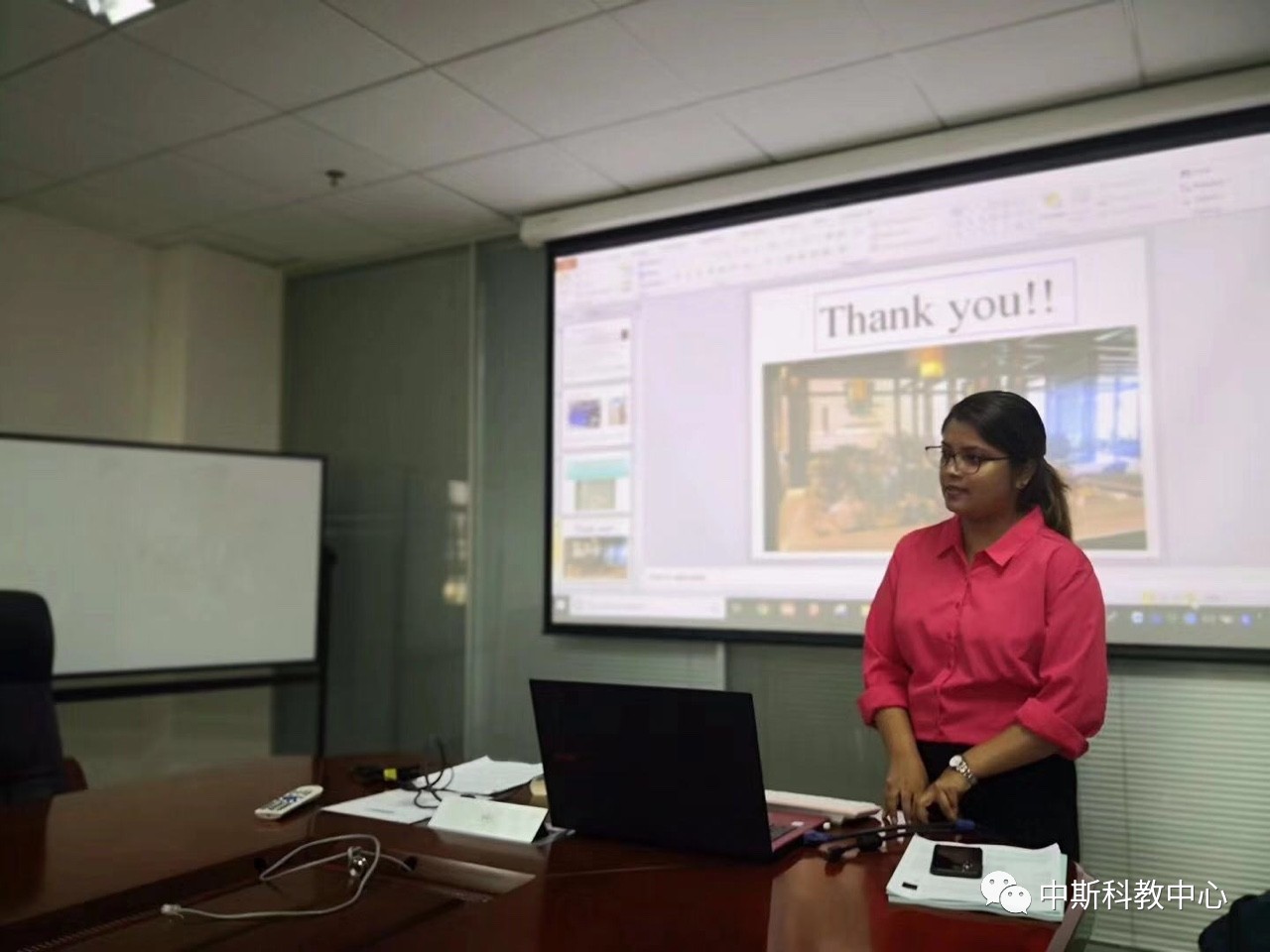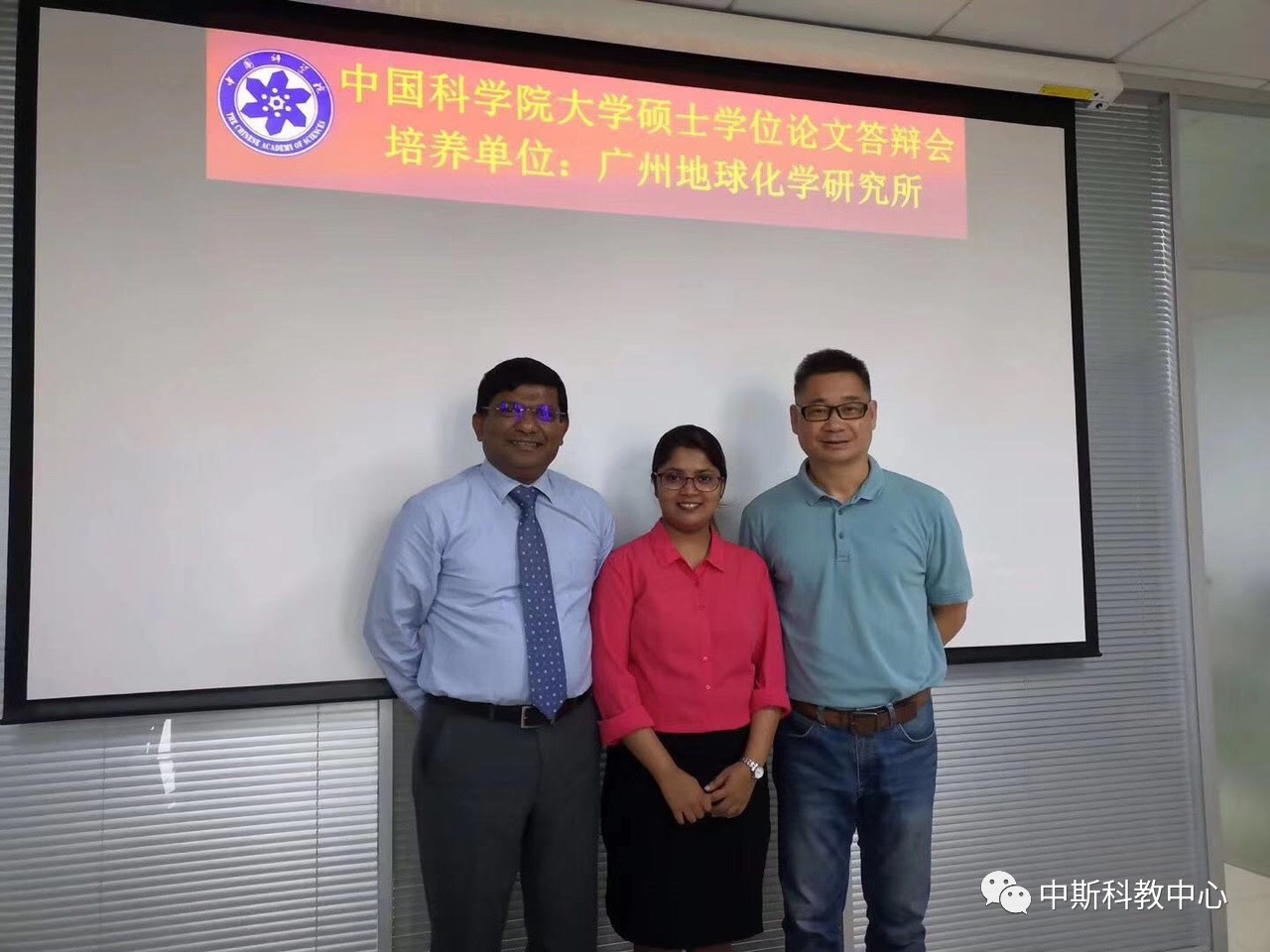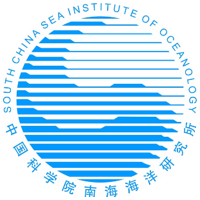斯里兰卡籍留学生Dilanka Nimanthi Dunusara Samaraweera在完成硕士阶段学习后,于9月20日在中国科学院广州地球化学研究所完成硕士学位论文答辩。中国-斯里兰卡联合科教中心斯方主任、卢胡纳大学渔业与海洋科技学院教授Tilak Priyadarshana担任答辩委员会主席。她的导师为广州地化所副所长张干研究员。
Dilanka Samaraweera同学在张干研究员的指导下,对斯里兰卡市政污水处理厂中抗生素的浓度特征、消费模式及去除效率进行了研究。选取了分别位于科伦坡和希卡杜瓦的2个市政污水处理厂,通过对连续7天的24小时进、出水样品中的17种常见抗生素进行分析,旨在揭示斯里兰卡不同人群的抗生素消费特征,同时考察抗生素在污水处理厂中的浓度特征及其对收纳水体的污染情况,并评估不同处理工艺对抗生素的去除效果。相关结果发表在《Emerging Contaminants》杂志。
Dilanka Samaraweera同学2015年毕业于卢胡纳大学,和首批斯里兰卡海洋环境科学硕士班学员同期来华攻读硕士学位。她在广州地化所攻读环境科学专业。



附:01 中文摘要
在过去的几十年里,由于每年使用成千上万吨的药理活性物质预防或治疗人类和动物以及农业中的感染性疾病,水体中的抗生素污染受到越来越多人的关注,已成为世界性环境问题。人使用抗生素后,大部分以母体或者活性代谢产物的形式随粪便或尿液排入下水管网,并进入市政污水处理厂。研究指出,许多抗生素不能被污水处理工艺完全去除,未被去除的抗生素最终进入天然水体,对人体健康和生态环境造成潜在危害。此外,许多国家的抗生素使用不规范,人用和兽用抗生素均存在滥用的情况。虽然目前已开展不少关于市政污水处理厂中抗生素的研究,但这些研究大多来自欧洲、北美和东北地区,东南亚国家的数据非常有限。因此,本论文作为在斯里兰卡开展的一项开创性研究,选取了分别位于科伦坡和希卡杜瓦的2个市政污水处理厂,通过对连续7天的24小时进、出水样品中的17种常见抗生素进行分析,旨在揭示斯里兰卡不同人群的抗生素消费特征,同时考察抗生素在污水处理厂中的浓度特征及其对收纳水体的污染情况,并评估不同处理工艺对抗生素的去除效果。
本研究的采样时间为2018年2月,选取的污水处理厂分别位于首都科伦坡和希卡杜瓦。其中,科伦坡的污水处理厂主要收集大科伦坡地区的家庭生活污水,该地区是制造业、贸易、商业服务和政府部门的主要就业中心。希卡杜瓦是斯里兰卡西南部一个快速发展的旅游中心,这里的污水处理厂专门处理酒店污水。本研究选取了4类17种典型抗生素,包括4种磺胺类和增效剂(Sulfonamides and synergist, SAs):磺胺嘧啶(Sulfadiazine, SDZ)、磺胺甲嘧啶(Sulfamethazine, SMZ)、磺胺甲恶唑(Sulfamethoxazole, SMX)、甲氧苄氨嘧啶(Trimethoprim, TMP),4种氟喹诺酮类(Fluroquinolones, FQs):诺氟沙星(Norfloxacin, NOR)、氧氟沙星(Ofloxacin)、环丙沙星(Ciprofloxacin, CIP)、恩诺沙星(Enrofloxacin, ENRO),3种四环素类(Tetracyclines, TCs):四环素(Tetracycline, TTC)、金霉素(Chlortetracycline, CTC)、多西环素(Doxycycline, DOX),4种大环内酯类(Macrolides, MLs):阿奇霉素、红霉素、克拉霉素、罗红霉素,2种氯霉素类(Phenicols, PCs):氟苯尼考(Florfenicol, FF)、氯霉素(Chloramphenicol, CAP)。本研究采用固相萃取法(SPE)同步提取目标物,即首先将采集到的水样立即调 pH到3,过0.7 μm的玻璃纤维滤膜,加入0.2 g Na2EDTA和100 ng的回收率指示剂摇匀,然后用HLB小柱富集净化。HLB小柱使用前分别用6 mL甲醇、6 mL超纯水和6 mL 2 g/L的Na2EDTA缓冲液(pH=3)依次活化,样品加载速度控制在5─10 mL/min,待样品全部富集完毕后,用4 mL超纯水和4 mL 10%的甲醇水溶液快速淋洗小柱,再真空干燥1h。接着用3 mL3的甲醇洗脱干燥的SPE小柱,洗脱液保存在10 mL的玻璃离心管中,氮吹浓缩到尽干后定容在1 mL的10%甲醇水溶液中,并过0.22 μm的针式滤头。上机测试前,向每个样品中加入100 ng的定量内标卡马西平-D10。
本研究应用高效液相色谱-串联质谱联用技术(安捷伦1290/6470QQQ)检测并定量目标物。色谱柱为Agilent ZORBAX RRHD Eclipse Plus C18(100 mm 2.1 mm, 1.8 μm),色谱柱温度设为40oC,流动相B为甲醇,A为0.4%甲酸+2mM醋酸铵溶液。质谱离子源为软电离源(electrospray ionization, ESI),雾化器压力为45 psi,干燥气流速为5 L/min,数据采集在多重反应监测模式(multiple reaction monitoring, MRM)下进行。
研究结果显示,进水样品中可检测到12种抗生素,包括SDZ、SMZ、SMX、TMP、NOR、OFL、CIP、ENRO、TTC、AZM、ETM-H2O和CTM。RTM和CAP仅在希卡杜瓦的进水样品中检出。所有样品都检不出CTC、DOX和FF。FQs的检出浓度较其他类抗生素高,以CIP为主要化合物。进水样品中CIP的浓度范围为433─6010 ng/L,该浓度和新加坡(2241─6453 ng/L)报道的浓度相当,但明显高于中国、突尼斯、伊朗和欧洲国家报道的水平。OFL和NOR的浓度范围分别为497─2900 ng/L和28.8─1380 ng/L,而ENRO的浓度较低,最高为3.79 ng/L,这与ENRO在许多国家仅被当作兽用抗生素有关。 进水样品中,SMX是最主要的磺胺类抗生素,科伦坡污水处理厂进水样品中的SMX浓度范围为254─2220 ng/L,希卡杜瓦则为5.16─384 ng/L。TMP常被用作增效剂添加在复方制剂复方磺胺甲恶唑(复方新诺明)中,制剂中SMX和TMP的添加比例为5:1。科伦坡样进水样品中的SMX:TMP = 6.91 ± 4.45,而希卡杜瓦则为0.58 ± 0.65,希卡杜瓦的低比例可能与TMP的单独使用有关,例如TMP可用于治疗旅行者腹泻。大环内酯类抗生素在科伦坡污水处理厂中的检出浓度较低,最高为AZM的27.7 ng/L,且科伦坡进水样品中ML的检出率均低于50%,但在希卡杜瓦则被广泛检出,尤其是AZM的检出浓度最高(ND─3340 ng/L),其次是ETM-H2O(58.5─662 ng/L)、CTM(3.66─593 ng/L)和RTM(2.89─408 ng/L)。虽然四环素曾是斯里兰卡广泛使用的抗生素,但本研究中的四环素浓度并不高,为ND─682 ng/L。根据斯里兰卡医疗药品司的报告,由于四环素的不良反应和耐药菌的大量产生,当地政府已出台指导意见来减少四环素的使用,这与本研究的结果一致。
研究结果显示,所有出水样品中均可检测到SMX、TMP、NOR、OFL和CIP。CIP仍然是主要检出的化合物,其在科伦坡和希卡杜瓦出水样品中的浓度范围分别为358─1140 ng/L和382─1210 ng/L。希卡杜瓦出水样品中FQs(65.6% ± 6.17%)的比例最高,其次是MLs(28.6% ± 7.08%)和SAs(4.75% ± 2.95%),而科伦坡FQs(76.9% ± 15.7%)和SAs(22.9% ± 15.8%)的比例最高。
本研究利用进水浓度、进水量、人口和药物代谢等参数对抗生素的消耗量进行了粗略估算。结果发现这2个污水处理厂服务人群的抗生素消费模式明显不同,希卡杜瓦(250 mg/1000人/天)的抗生素日摄入量高于科伦坡(90 mg/1000人/天),且MLs的摄入比例高于FQs,尤其发现AZM是希卡杜瓦地区使用最普遍的抗生素,估算得到采样期间每天约0.287‰的游客会服用AZM。通过与斯里兰卡医疗用品司的一份官方报告进行比较,我们认为AZM在当地居民中并不常用,主要由外国游客引入。
此外,本研究发现,FQs在科伦坡污水处理厂中的去除效率分别为NOR = 87.9% ± 6.91%、OFL = 71.2% ± 11.9%、CIP = 79.5% ± 11.7%,在希卡杜瓦污水处理厂中的去除效率分别为:NOR = 9.23% ± 115%、OFL = 68.0% ± 11.0%、CIP = 42.8% ± 59.0%。TTC在科伦坡和希卡杜瓦污水处理厂的去除效率分别为100% ± 0.00% 和81.5% ± 18.6%。研究指出,FQs和TTC的主要去除机理是污泥吸附而非生物降解。我们的研究进一步证实,活性污泥法比人工湿地具有更强更稳定的抗生素去除效果。从STP中释放的抗生素的计算方法是将废水浓度乘以污水处理厂的平均日排放量。结果显示,OFL和CIP从STPs中释放的量最高。对于大多数目标抗生素,其释放量低于1 g/day。每天共有5.60±1.41 g, 6.54±3.46 g目标化合物分别排入了韦拉瓦塔海和希卡杜瓦海。需要进一步研究来测试由污水处理厂排出的抗生素是否会破坏水生和海洋生态环境或增强抗生素的耐药性。
02 英文摘要
During the past few decades, the occurrence of antimicrobials in the aquatic environment becomes a worldwide issue and a growing environmental concern as thousands of tons of pharmacologically active substances are used yearly to treat or prevent infective diseases in human and veterinary medicine and in agriculture. Most of the monitoring data on the occurrence of antibiotics in sewage treatment plants (STPs) have been reported from Europe, North America and some countries in Northeast Asia, while very limited data can be found in Southeast Asian countries. As a pioneering research in Sri Lanka, 24 h composite wastewater samples were collected at the influent and effluent of two municipal STPs for consecutive 7 days to investigate occurrence, consumption and removal efficiency of seventeen antibiotics. The STP was located in Colombo and Hikkaduwa, respectively, representing two kinds of communities. Colombo STP mostly collects wastewater from local households in the Greater Colombo area which is the major center of employment in manufacturing, trade, business services and government service sectors. Hikkaduwa is a rapidly tourist center in the southwest of Sri Lanka where the STP treats domestic wastewater from the tourist hotels.In this study occurrence and removal and seventeen antibiotic compounds from the groups of sulphonamides and synergist (SAs), fluoroquinolones (FQs), tetracyclines (TCs), macrolides (MLs) and phenicols (PCs) were investigated in two sewage treatment plants (STPs) featuring different treatment technologies. The compounds were extracted from sewage samples by solid-phase extraction (SPE). For the detection and quantitative determination of the analytes, High-performance liquid chromatography coupled with tandem mass spectrometry (HPLC–MS/MS) (1290/6470QQQ) was performed in the multiple reaction monitoring (MRM) mode. As a result, the majority of the antibiotics can be always detected from both STPs, except for chlortetracycline, doxycycline and florfenicol. Fluoroquinolones (FQs) were detected at highest concentrations with ciprofloxacin (CIP) being the dominant compound. Concentrations of CIP in the influent samples were in the range of 433−6010 ng/L. In general, the removal efficiency varied significantly from -1100%−100% depending on the compound and treatment process. The activated sludge system of Colombo exhibited better elimination and more stable performance than the constructed wetland process of Hikkaduwa. The consumption of antibiotics was estimated on the basis of influent mass load and catchment population data. We found a difference in consumption patterns between the two served areas. Compared to local people in Colombo, tourists in Hikkaduwa appeared to take more antibiotics during the study period with the estimated daily dose of 0.25 g per 1000 persons. Moreover, macrolides accounted for a larger portion than FQs in Hikkaduwa, with azithromycin (AZM) being the most prevalent antibacterial agent. After comparison with an official report by Medical Supplies Division of Sri Lanka, we conjected that AZM was not commonly used among local people and it was mainly introduced by foreign arrivals. However antibiotics are only partially eliminated during the sewage treatment process and the residual antibiotics may be discharged into the environment. Further study required to be applied to test whether these levels in this study could disrupt aquatic and marine ecology or promotion of antibiotic resistance.
















 粤公网安备 44010502002384号
粤公网安备 44010502002384号